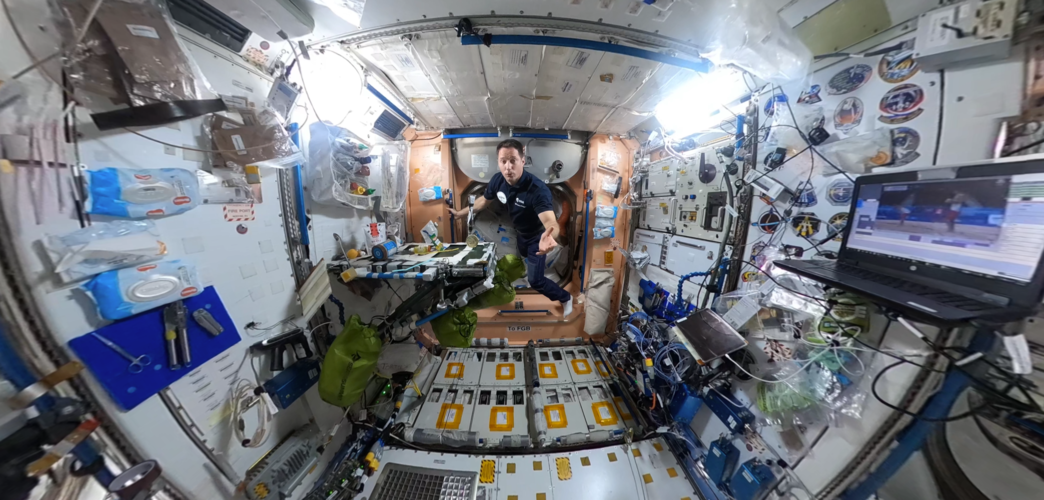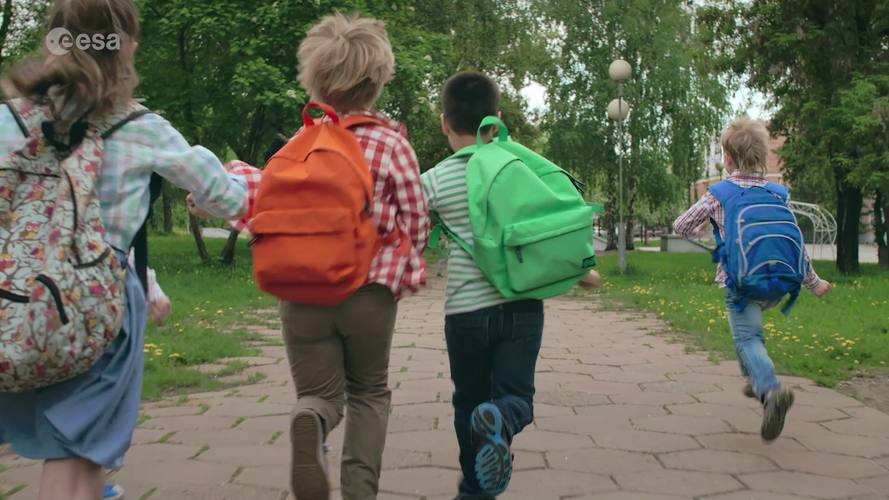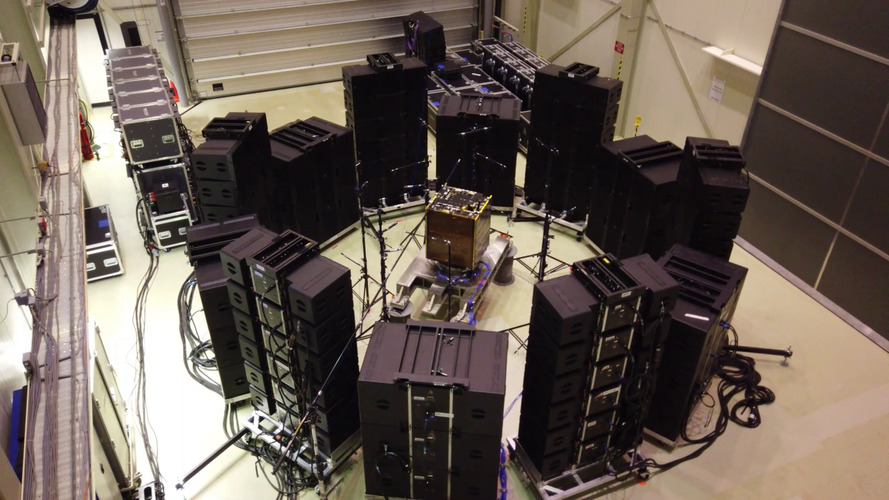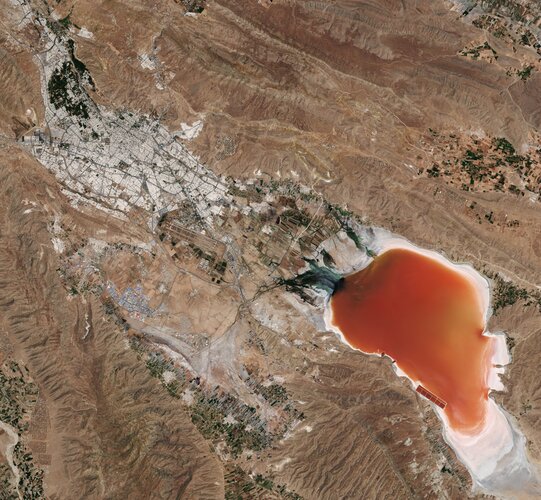The ESA/JAXA BepiColombo mission to Mercury will make the first of six flybys of its destination planet on 1 October before entering orbit in 2025.
Space News & Blog Articles
Video: 00:01:09
What’s coming next in space? Find out at our virtual ESA Open Day on Sunday 3 October, from 1300 – 1600 CEST (1200 – 1500 BST). Your chance to talk to the people behind future space missions, get close-up views of space hardware and hear from astronaut Alexander Gerst. The Open Day is open to anyone; all you have to do is register to attend.
A new six-month round-trip commercial space transportation service from 2022, backed by ESA, will enable companies to manufacture in space very pure and more capable materials, discover new pharmaceutical drugs and bring them back for use on Earth.
With Covid restrictions a little more relaxed, scientists from Europe and the USA were finally able to team up for a long-awaited field experiment to ensure that a new Copernicus satellite called CHIME will deliver the best possible data products as soon as it is operational in orbit. This new mission is being developed to support EU policies on the management of natural resources, ultimately helping to address the global issue of food security.
Image:
A female volunteer gets comfortable in her waterbed, as the dry immersion study to recreate some of the effects of spaceflight on the body kicks off this week in Toulouse, France. Called Vivaldi, or Validation of the Dry Immersion, the campaign features all female-participants in a European first.
Immersion begins when water covers the subject above the thorax, immobilised with legs and trunk covered with a cotton sheet. Only the arms and head remain free outside the tarp.
As a result, the body experiences ‘supportlessness’ – something close to what astronauts feel while floating on the International Space Station.
In weightlessness, astronauts’ bodies lose muscle and bone density, vision changes and fluids shift to the brain. Finding ways to stay healthy in orbit is a large part of human spaceflight research.
Volunteers spend almost 24 hours a day in the immersion tank, limiting their movements as much as possible. Each day starts at 7 am with urine and blood samples, followed by scientific protocols and measurements to study how the body adapts.
Calabria, often referred to as the ‘boot’ of Italy, is featured in this image captured by the Copernicus Sentinel-2 mission.
This week 20 women are tucking themselves in a waterbed for five days as part of a dry immersion study to recreate some of the effects of spaceflight on the body. The campaign kicked off yesterday with the first two subjects at the Medes space clinic in Toulouse, France.
Video: 00:02:40
ESA astronaut Thomas Pesquet takes you on a tour of the International Space Station like no other. Filmed with a 360 camera, the Space Station 360 series lets you explore for yourself alongside Thomas’s explanation – episode five is NASA’s Node-1, also known as Unity.
Unity is the module that connects the Russian segment of the International Space Station to the other modules. Launched on 4 December 1998 inside Space Shuttle Endeavour, it was joined to the Russian Zarya module two days later, forming the basis of the International Space Station. The cylindrical module has six docking ports to connect visiting spacecraft and other modules.
Follow Thomas: https://blogs.esa.int/exploration/it/category/astronauts/thomas-pesquet/
The video is in French, to activate the English subtitles, click on the CC icon at the bottom right of the YouTube player.
Access the other Space Station 360 videos

For a team of scientists and technicians from Europe and the US, the fact of ‘going back to the office’ this September has meant heading off to the Cabo Verde islands in the Atlantic – not to extend their summer holidays, but for a complex international experiment campaign that will scrutinise the data being delivered by one of today’s most innovative Earth observation satellites: ESA’s Aeolus wind mission.
Video: 00:04:32
Kick off the 2021-22 school year with ESA school projects. ESA astronaut Matthias Maurer introduces the wide range of space-based STEM projects available to primary and secondary students: Moon Camp, Climate Detectives, Astro Pi, CanSat and Mission X.

Maharloo Lake, a seasonal salt lake in Iran, is featured in this image captured by the Copernicus Sentinel-2 mission.
Video: 00:03:01
Verifying that a satellite will resist the sheer noise of the rocket launching it into orbit is a very important test that every mission must successfully pass.
“Typically satellites are tested inside purpose-built reverberant chambers, such as ESTEC’s own Large European Acoustic Facility sometimes described as the largest and most powerful sound system in Europe,” explains ESA test facility expert Steffen Scharfenberg, overseeing the test campaign together with ESA mechanical engineer Ivan Ngan. A very powerful noise generation system produces a uniform noise field thanks to the reverberation on the thick concrete walls of the chamber.
ESA has initiated a working group comprising of European spacecraft testing entities, industries and academics to study an alternative method, in which the satellite is surrounded by less powerful noise generators but these are placed very close all around the satellite. This method is called the Direct Field Acoustic Noise Test.
This technique is already in use in several locations but there is not yet much experience of it in Europe. Accordingly ESA has just completed a test campaign where the classic method and the new method have been used on a small satellite to compare their results.
Evaluating this new kind of acoustic test for satellites at ESA’s ESTEC Test Centre in the Netherlands, shown via time-lapse.

ESA confirmed a contract signature yesterday with Surrey Satellite Technology Ltd (SSTL) to be the main customer for their Lunar Pathfinder satellite launching in 2024 that will provide communications services around the Moon.
Video: 00:01:34
ESA astronaut Thomas Pesquet takes you on a tour of the International Space Station like no other. Filmed with a 360 camera, the Space Station 360 series lets you explore for yourself alongside Thomas’s explanation – episode four is NASA’s Quest airlock.
The Quest airlock is the Station’s smallest module, but it is vital for going on spacewalks. This is where the astronauts suit up into their spacesuits, prepare for the spacewalk and enter the airlock to go outside for maintenance, installing new equipment or science experiments.
Follow Thomas: https://blogs.esa.int/exploration/it/category/astronauts/thomas-pesquet/
The video is in French, to activate the English subtitles, click on the CC icon at the bottom right of the YouTube player.
World governments agreed in the late 1980s to protect Earth’s ozone layer by phasing out ozone-depleting substances emitted by human activities, under the Montreal Protocol. The phase out of these substances has not only helped protect the ozone layer for future generations but has also protected human health and ecosystems by limiting the harmful ultraviolet radiation from reaching Earth. On 16 September, the International Day for the Preservation of the Ozone Layer, we take a closer look at this year’s ozone hole.
While wildfires are a natural part of California’s landscape, a severe drought, coupled with extreme temperatures, have sustained several major fires for much of August. As of 14 September, more than 7000 wildfires have been recorded, burning over 900 000 hectares across the state.



